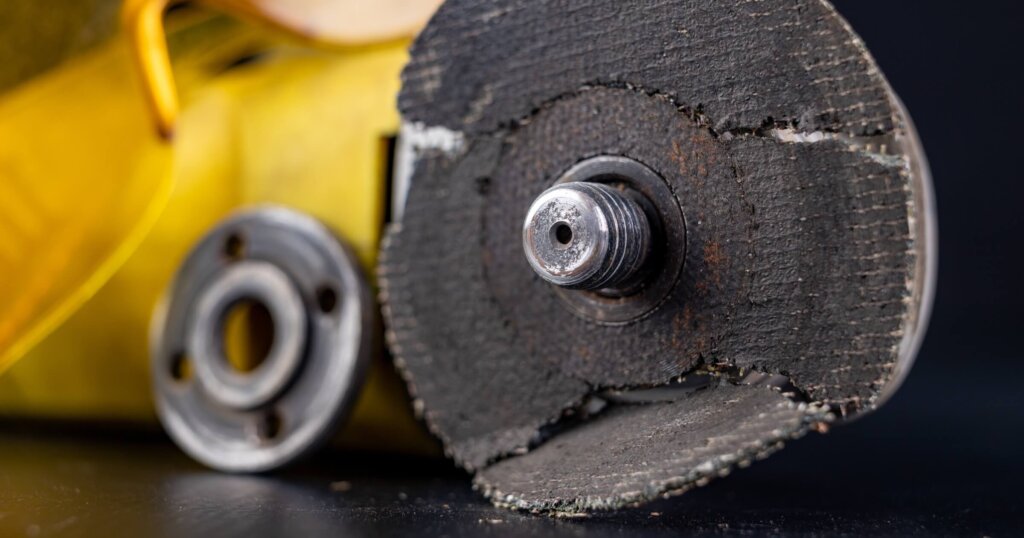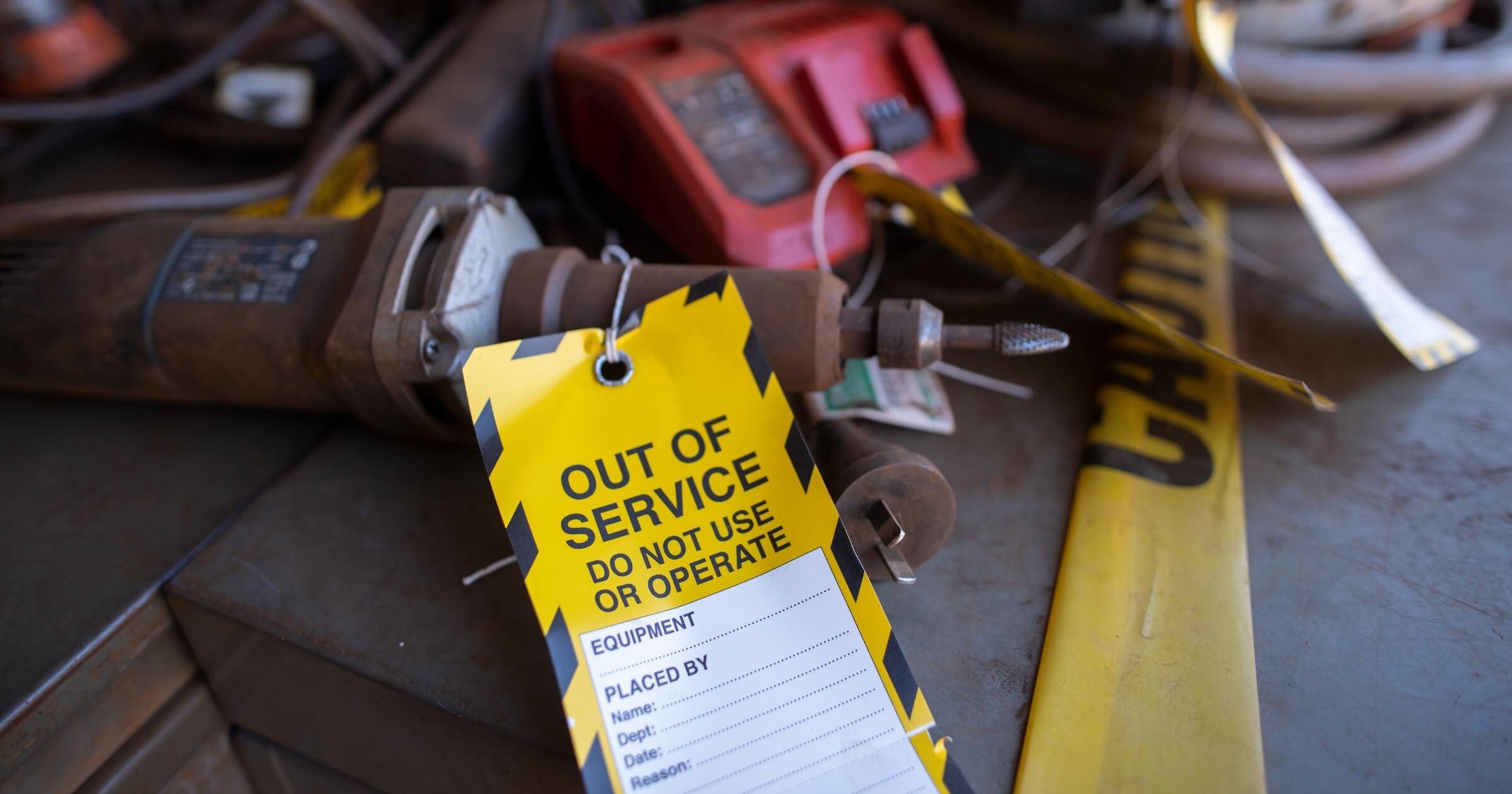Power tool safety is perhaps one of the most important considerations on my job site. Whether you’re a plumber, carpenter, or foreman, ensuring your power tools run properly can be the difference between remaining at the job site and taking a ride to the hospital. Proper inspection of the exterior, electrical components, bits, and blades can help prevent issues like loss of control, kickbacks, and flying debris. In this article, we’ll explore why power tool safety matters, how to inspect your equipment correctly, what to do if you find a damaged power tool, and maintenance tips to keep your equipment in good working condition.
Why power tool safety matters
We’ll get the obvious answer out of the way: injuries and accidents are more common than you think. When workers fail to inspect their tools, they leave themselves and their colleagues open to safety risks, injuries, and in some cases, fatalities. Here are some ways a damaged tool can slip under the radar and result in an accident.
- Loss of control: Even when running properly, power tools can be difficult to control. When they malfunction and the user mishandles the tool because of damage, it can cause serious cuts or even throw them off balance, resulting in further injury.
- Kickbacks: Kickbacks happen when power tools bind or snag on the material being cut or drilled into, forcefully “kicking” the tool back toward the operator. With heavy-duty tools like angle grinders, routers, and saws, it can pose a serious risk to the arms, hands, chest, and potentially the face if the operator is ill-prepared for the sudden force.
- Fatigue: If a tool isn’t inspected and isn’t running optimally, it can increase the operator’s fatigue. Fatigued workers are at a greater risk of losing grip strength and coordination, often leading to the misuse or loss of control over the tool.
- Hearing loss: Prolonged exposure to noise from power tools can cause hearing loss. It often goes unnoticed, as users pick up the same tools day in and out, and acclimate to the noise. Improperly inspected tools can be noisier than need-be or necessary, so it’s important to pay attention to noise output to protect workers’ hearing in the long term.
- Electrical hazards: If a tool has a damaged or frayed cord or is improperly grounded, it can cause electrical shocks or even fire hazards to the work site.
- Flying debris: Most power tools create dust, wood chips, and other minor debris during use. If a tool is damaged but not removed from use after inspection, it could lead to more serious debris, like bits and blades, hitting the operator.
Safety aside, proper inspection of your power tools also helps you understand what needs more maintenance or a replacement part, thereby extending the lifespan of your equipment. Tools that run well mean you get jobs done quicker, with more precision, and you save the company money on bigger replacement costs down the road.
Key inspection areas before each use
Exterior and casing
It’s important that workers visually examine a tool’s body for breaks, cracks, and other noticeable wear and tear. The casing, handle, and auxiliary handles, when damaged, could create a significant safety risk to operators before the next use, causing kickback, fatigue, or loss of control.
Pay attention to the plug, cord, and the condition of the battery if applicable. Any tools with visible damage to the casing or exterior should be immediately pulled from service.
Power source and electrical components
Carefully inspect the electrical components and power source of your tools for cuts, cracks, or fraying. For corded tools specifically, ensure the plug and cord are damage-free and properly grounded. For cordless tools, inspect the battery for signs of swelling, cracks, or leaks. Also, make sure the battery terminal is clean before use. Power switches, speed dials, and trigger locks should also be inspected for damage.
Electrical hazards are some of the most serious safety concerns on any job site. The tools you rely on day in and day out are not exempt from damage, so make sure they are routinely checked in detail to prevent serious shocks.
Safety guards and moving parts
Looseness, cracks, or damage to safety guards and other moving parts could be the difference between a job well done and losing control of your tools on the site. Switches, speed dials, trigger locks, and other safety mechanisms are in place to protect workers and should be inspected for signs of swelling, leaks, or insulation damage. Cord plugs should also be straight, with secure prongs, before operation.
Blades, bits, and cutting edges
Before inspecting cutting edges, bits, and blades for damage, make sure the tool is powered off and disconnected. Visually assess these parts for dullness, cracks, and chips. Magnification for precise inspection is also important, as chips and dull blades require operators to use more force than necessary. This often results in kickback, loss of control, and improper grip of the tool.
You should also inspect these tool bits for signs of bending or distortion. If all looks well, continue to monitor these parts while the tool is in use. Suddenly requiring more force for rough cuts or drilling might mean potential damage.
What to do if you find a damaged power tool

Photo courtesy of https://www.shutterstock.com/
Reporting damaged power tools is a part of effective safety communication, and it should be a straightforward process.
- Tag the tool as damaged or out of service
- Remove the tool from the site floor
- Tell a supervisor or manager about the damage
- Assign qualified personnel to address the issues
Processes may vary from site to site, so check in with leadership about proper protocol for tagging damaged tools.
Supplementary safety steps before operating
Use correct PPE and verify grounding
As with heavy machinery safety, wearing proper Personal Protective Equipment (PPE) is crucial for power tool use. Checking that the tools are properly grounded is also important for preventing electrical hazards and other injuries. Workers operating power tools should wear the following equipment to protect against flying debris, excessive noise, and electrical shock:
- Hearing protection
- Face and eye protection
- Respiratory protection
- Hand protection
- Foot protection
Additional PPE may also be applicable depending on your particular role or task. This PPE might include face shields, aprons, safety helmets, and fire-resistant clothing.
Go beyond reading the manual and confirming tool-job fit
Workers should be familiar with each power tool’s operating manual, but outside of how the tool functions, it’s important to know the context of use and tool capacities. Workers should be trained to understand:
- Applications: What is the intended use of each tool?
- Capabilities and limitations: What is the cutting capacity and material suitability for each tool?
- Troubleshooting: How can workers identify minor issues and address them before they become safety risks?
By using power tools within their limits and understanding what a minor malfunction could look like, workers are more likely to practice better safety and prevent injuries and accidents.
Maintenance habits to prevent damage
Clean and store properly after use
Workers should keep tools free of debris, dust, chips, and other buildup to ensure proper operation and reduce future risk of tool malfunctions. Tools should be stored or re-racked where they belong in a clean, dry place.
Schedule routine inspections and keep records
Workers should inspect their tools before and after each use, keeping records of inspection completion, maintenance, and the dates when tools are put in and out of operation for repairs. These notes should include the production date of the tool and detail any changes to the blade and bits.
Sharpen and handle with care
A sharp tool is a safe tool. By keeping the tools sharp, operators can use a safer grip, reduce fatigue, and stay in control while operating them. Dull blades should be replaced and re-sharpened, and should be handled with care while being swapped in and out.
Final safety reminder
No sign of power tool damage is too small to report. Don’t ignore cracks, fraying, looseness, and other signs of damage before and after you operate your tools. Also, ensure you’re wearing proper PPE, performing routine maintenance, and recording which tools need repair or replacement.
Safety on site is crucial, and it requires commitment and trust that the entire team is fulfilling their duties to eliminate risks and prevent injuries or fatalities.
Like this and want more like it? Subscribe to our newsletter and follow us on LinkedIn to stay informed about the latest in construction safety.


